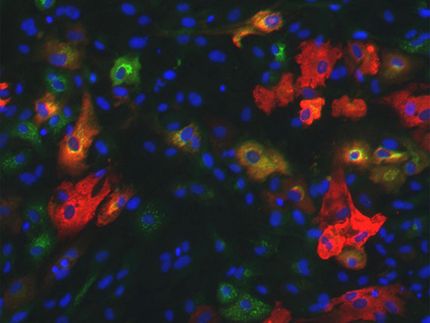DNA to the Defense: Genomic expansion and diversification in a human parasite allow it to evade host detection
Advertisement
A team of scientists headed by Dr. Sara Melville at the University of Cambridge has shown that the parasite known to cause African sleeping sickness has evolved an unusual chromosomal structure as a result of environmental adaptation. In this parasite, the chromosomes are highly enriched in subtelomeric sequences - dynamic and variable regions that connect the chromosome ends to the gene-rich cores. These subtelomeres, in some cases comprising 75% of the total chromosome length, contain a large repertoire of genes involved in circumventing the human immune response. This finding challenges scientists' general view of how a chromosome is functionally organized. An article describing the research will appear online this week in the journal Genome Research.
African sleeping sickness, or trypanosomiasis, is caused by a protozoan parasite known as Trypanosoma brucei. Endemic to sub-Saharan Africa, it is transmitted by tsetse flies and infects a variety of mammals, including humans. There are no vaccines against T. brucei, and most drugs to treat the disease have dangerous side effects or are scarce in the countries most heavily afflicted. Each day, the disease kills approximately 100 people.
In order to avoid destruction by mammalian immune systems, T. brucei continually changes the expression of the proteins on its outer surface. These proteins are encoded by VSGs, or variant surface glycoprotein genes. While the immune system attacks most of the parasites in a given host, some trypanosomes rapidly evolve and express new variants of VSG, thereby allowing the parasite to persist and spread through a population.
In the current study, Sergio Callejas, a Marie Curie Research Fellow in Melville's laboratory, conducted a series of experiments to demonstrate that T. brucei has used a strategy of chromosomal expansion to diversify its repertoire of VSG genes. Most of these genes are concentrated in subtelomeric regions, which in T. brucei, are hemizygous: only one copy of this region is present in the chromosome. In contrast, the gene-rich cores of T. brucei chromosomes are diploid, meaning that the standard two copies are present.
"The main observation from our work is that subtelomeres can dominate a chromosome to such an extent that a very small proportion of a chromosome is truly diploid," Melville explains. "These huge subtelomeres are largely non-coding DNA, yet they contain 'contingency genes' that the parasite multiplies and diversifies for future use."
In previous studies, Melville's group showed that trypanosome chromosomes were quite variable in size. "The range of size variation we observe in African trypanosomes far exceeds anything reported in other organisms to date," Melville says. "This, coupled with the potential size of the VSG repertoire in these huge subtelomeres suggests an unrivalled capacity for new immune-resistant strains of African trypanosomes."
Analysis of the genome sequence of T. brucei was published just last year, amid increasing calls for research into new control strategies for this neglected disease. The current study underscores this parasite's reputation as a master of adaptation, devoting unprecedented resources to avoiding immune attack. Since the VSG coat appears to prevent access to other non-variable parasite proteins, such capacity for variation further dims hopes for an effective vaccine for affected populations in rural Africa.






















































